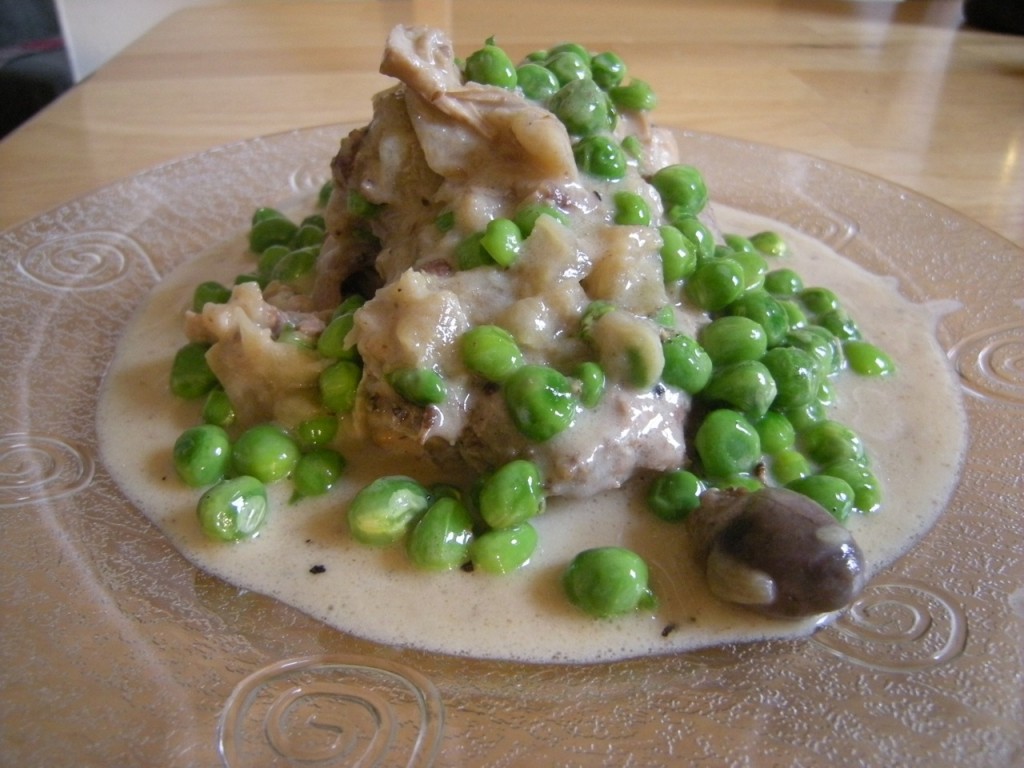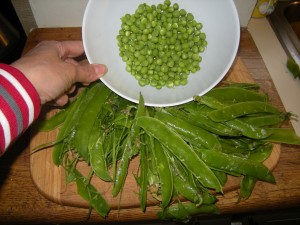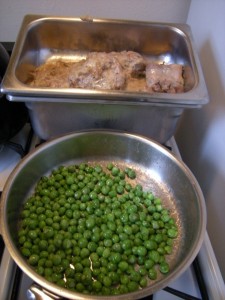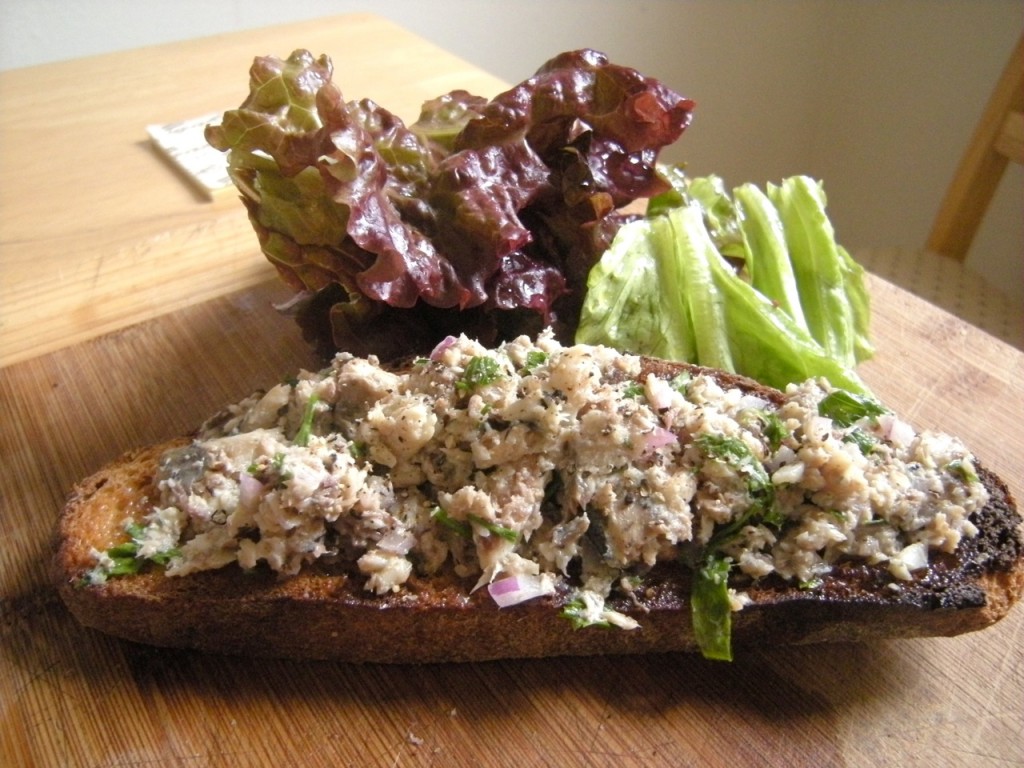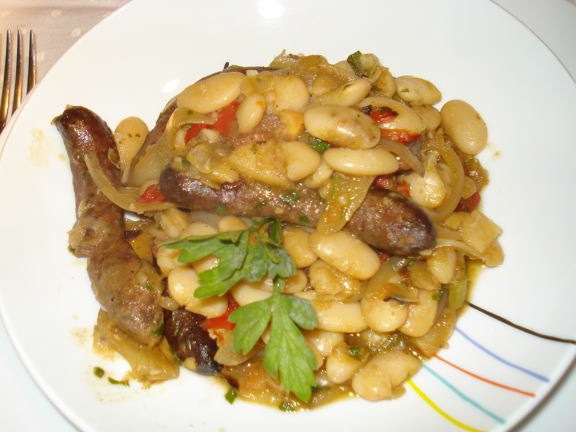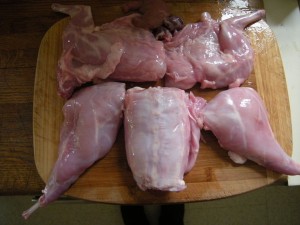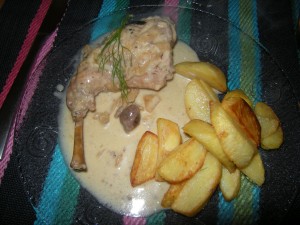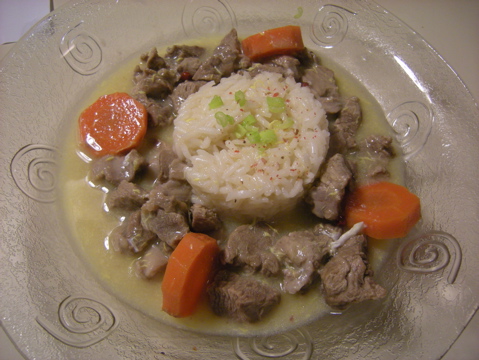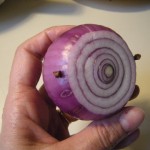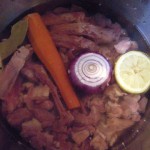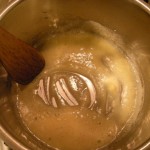I love to rearrange leftovers. I learned this skill from my grandfather who was a master at making a splendid dish with a week’s worth of leftovers. Do you remember the Quick Apple Rabbit last week? I had frozen the leftovers and I served them last night with fresh green peas. It worked very well though it became a different dish. The apple taste got a bit lost but the popping texture of the delicious fresh peas with the complex cream sauce made up of for it.
I would highly recommend the double boiler technique to reheat delicate dishes or sauces —it works great for mash potatoes, gravy, hollandaise, chocolate sauce. A double boiler is a double-decker sauce pan: the upper container fits tightly into a lower one filled with water. Make sure your lower container has always enough water. Whatever is in the upper deck will be warmed up by steam and not by a direct flame. This is a more gentle method as you will have better control and it can also be used to keep things warm while you are having your cocktails. I should mention here that I do not have a microwave and use this technique all the time.
Recipe:
Shell your fresh peas.
In a skillet melt 2 tablespoons of butter with a dash of oil, add the peas, lower the heat and cover for about 6 minutes — that will depend on how big or mature your peas are. Make sure they are not over cooked.
Once they are cooked add the to your rabbit, taste and adjust seasoning. I did add a generous “round” of fresh ground pepper.
And speaking of peas, here is my pea drawing from last year in homage of my friend “Petit Pois”:



